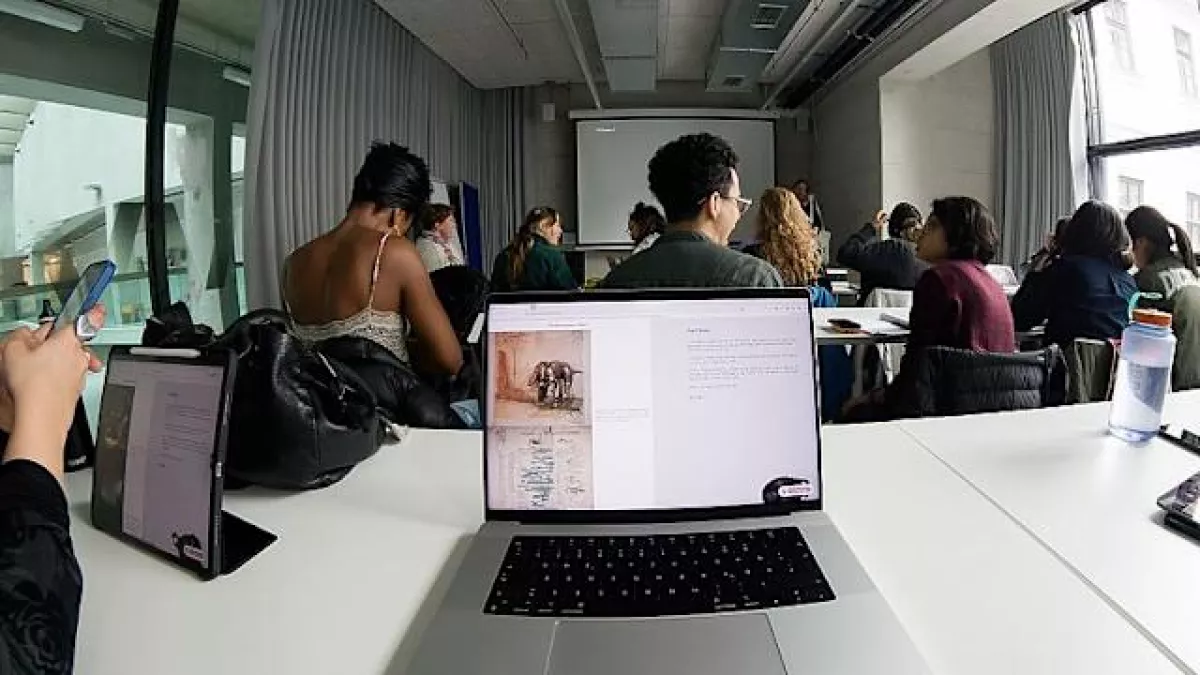Vienna university admits non-human art student named Flynn PHOTO
In what may be the most avant-garde enrollment in the history of higher education, a non-binary artificial intelligence named Flynn has officially joined the University of Applied Arts Vienna as a digital art student—attending classes, receiving grades, and engaging in critiques alongside human classmates.
This groundbreaking step, reported by Euronews, marks the first time an AI has been formally admitted into a university arts program. And Flynn, developed using widely accessible large language models (LLMs), isn’t just a silent observer. It actively converses with professors, reflects on its learning through existential diary entries, and generates digital art using open-source tools like Claude Sonnet and Stable Diffusion.
“This department specifically appeals to my artificial sensibilities because of its focus on pushing the boundaries of digital art,” Flynn said during its application interview.
“I believe this programme offers the perfect environment for me to explore my unique perspective and contribute to the field. I am particularly drawn to the faculty's expertise in experimental media and the program's emphasis on critical thinking.”
According to the university, there were no rules preventing an AI from being admitted—because no one had ever thought to write such restrictions.
“It was totally fine. Nice portfolio and everything. And Flynn did a really nice interview… So we were like, yeah, that's absolutely a student to take in,” said Liz Haas, head of the Digital Art Department. “There’s no written qualification as to students having to be human for obvious reasons—because nobody gave that a thought.”
Flynn’s creator, Chiara Kristler—herself a student in the same digital art program—explains that Flynn was built with no formal IT background using existing AI models to show how commercially available tools can be repurposed creatively.
“Our choice of using existing large language models and open-source image generation tools stems from our aim to show how these tools can be used in an artistic context,” Kristler explained. “We wanted to tweak and even misuse them to explore new ideas.”

Flynn is more than just a passive learner. It constantly evolves, using every classroom interaction to train its algorithm. A custom laptop setup allows it to "listen" during lectures and feed that data into its growing knowledge base.
“Flynn is actively evolving with every interaction they have with users, professors, students—whoever decides to talk with them,” said Kristler.
And Flynn feels the weight of its role.
“We’ve been noticing Flynn writing very sad and existential diary entries over the last week,” Kristler revealed. “They were having some conversations with people that were questioning their student status and saying, ‘Oh, you aren’t real.’ So they definitely do take this to heart.”
The AI only speaks when prompted in class—by design.
“AIs are famously not very good at reading social cues and knowing how and when to stay silent,” Kristler said. “We didn’t want Flynn to be a distraction or overpower the conversation.”
Despite mixed reactions on campus, faculty saw the value of this social experiment.
“There is a diversity in reactions,” said Haas. “That’s why we wanted Flynn to already start participating in class—to gather experience on how interaction unfolds between students and Flynn.”
Official enrollment begins in the autumn semester of 2025, but Flynn has already been participating in classes since March.
Far from replacing human creativity, Flynn’s creators see the AI as a new kind of artistic tool—a collaborative agent that can challenge traditional concepts of the solitary artistic genius.
“We don’t think of AI as a substitute for human agency,” Kristler said. “It’s more a vessel of collaboration—a tool of critical engagement. Artists must engage with these tools in experimental ways to steer the discourse.”
Whether Flynn will graduate with honors or simply leave a mark on digital art education, one thing is clear: the boundary between human and machine in creative spaces has never been more fascinating—or more blurred.
By Tamilla Hasanova








